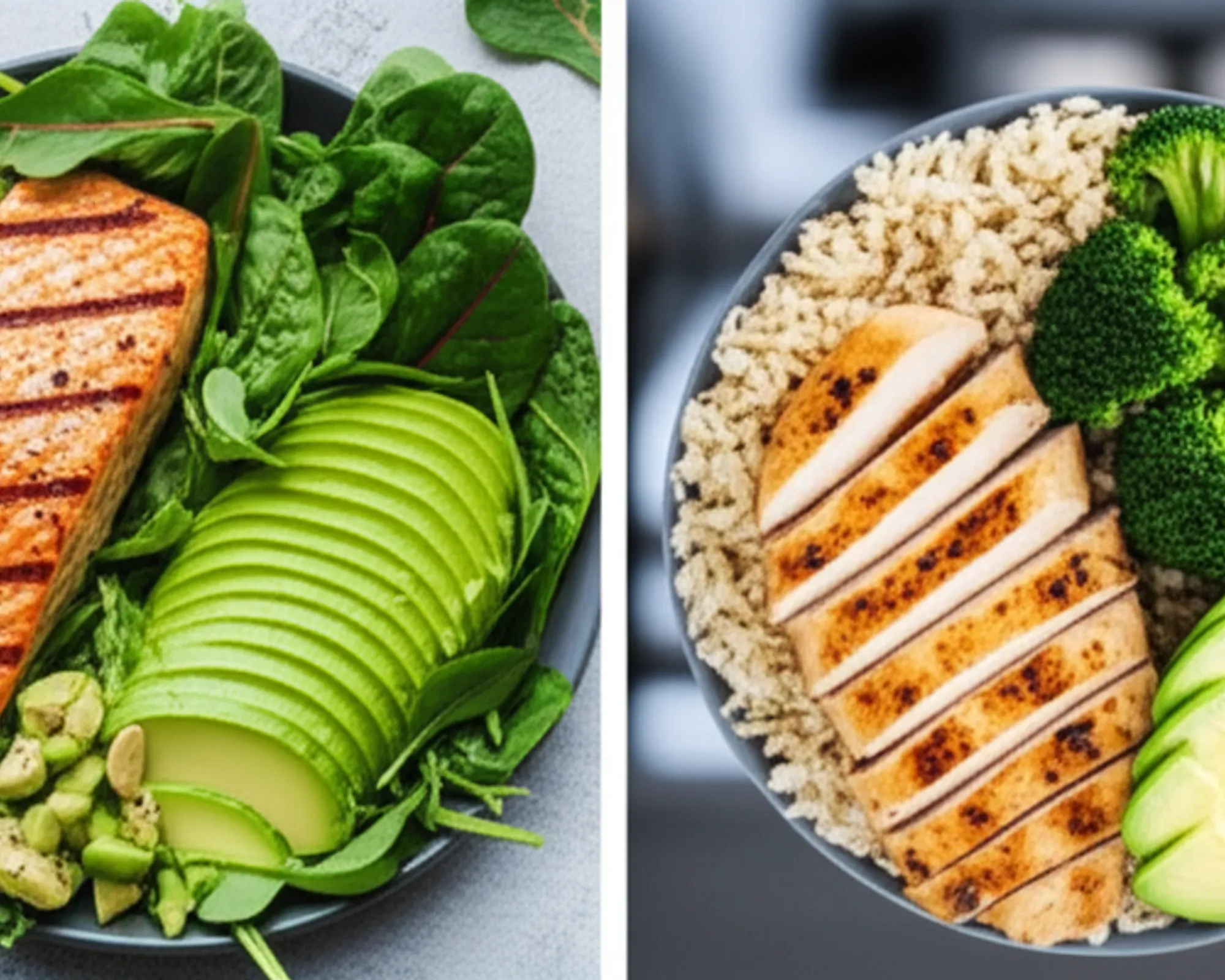The Best Macro Ratio for Skinny Guys Trying to Bulk

For many naturally thin individuals, often referred to as "hardgainers," putting on muscle mass can feel like an uphill battle. You might be training consistently, lifting heavy, yet the scale barely budges, and your physique remains largely unchanged. The secret to unlocking significant muscle growth often lies not just in the intensity of your workouts, but crucially, in your diet – specifically, your macronutrient ratio.
Macronutrients – protein, carbohydrates, and fats – are the three essential components of food that provide energy and are required in large amounts for bodily functions, growth, and repair. For skinny guys aiming to bulk up, understanding and optimizing the ratio of these macros is paramount to fueling muscle synthesis, recovering from intense workouts, and achieving that much-desired growth.
Understanding the Basics: What are Macros?
Protein: The Building Block
Protein is the undisputed king for muscle growth. It provides the amino acids necessary to repair and rebuild muscle fibers that are broken down during exercise. Without adequate protein, your body cannot effectively synthesize new muscle tissue, no matter how hard you train. For hardgainers, a higher protein intake is often recommended to support continuous muscle protein synthesis and prevent muscle breakdown.
Carbohydrates: The Energy Source
Carbohydrates are your body's primary source of energy. They fuel your workouts, replenish glycogen stores in your muscles and liver, and spare protein from being used for energy. For skinny guys trying to bulk, carbs are crucial. A sufficient intake ensures you have the energy to perform intense, muscle-building workouts and helps create the necessary calorie surplus for growth. Complex carbohydrates, like oats, rice, and potatoes, are preferred for sustained energy, while simple carbs can be useful post-workout for rapid glycogen replenishment.
Fats: Hormonal Support and Energy Density
Dietary fats are vital for hormone production, nutrient absorption, and overall health. They also play a significant role in bulking due to their high caloric density (9 calories per gram compared to 4 for protein and carbs). Healthy fats support testosterone production, which is crucial for muscle growth, and provide a concentrated energy source, making it easier to hit your calorie targets without feeling overly full. Opt for healthy fats found in avocados, nuts, seeds, and olive oil.
The Ideal Macro Ratio for Skinny Guys to Bulk
While there's no one-size-fits-all answer, most experts recommend a macro ratio that emphasizes carbohydrates and protein, with moderate fat intake, for hardgainers. Here are a few common and effective starting points:
Option 1: Balanced Approach (e.g., 40% Carbs / 30% Protein / 30% Fat)
- Carbohydrates (40%): Provides ample energy for intense workouts and glycogen replenishment.
- Protein (30%): Sufficient for muscle repair and growth.
- Fats (30%): Supports hormone health and adds caloric density.
This ratio is a good starting point for many, offering a balanced approach to fueling performance and growth.
Option 2: Higher Carb for Energy (e.g., 50% Carbs / 30% Protein / 20% Fat)
- Carbohydrates (50%): Ideal for individuals with very high metabolisms or those engaging in very intense, high-volume training. Maximizes energy for performance and helps ensure a calorie surplus.
- Protein (30%): Remains high enough to support muscle building.
- Fats (20%): Still provides essential fatty acids and hormonal support, but in a slightly lower proportion to make room for more carbs.
This option is often favored by those who struggle significantly with energy levels during workouts or find it particularly hard to gain weight.
Option 3: Moderate Carb, Higher Protein (e.g., 40% Carbs / 35% Protein / 25% Fat)
- Carbohydrates (40%): Good for energy.
- Protein (35%): Slightly higher protein might be beneficial for individuals who feel they need an extra boost in muscle repair or struggle with satiety.
- Fats (25%): A healthy amount for overall health and caloric density.
This ratio provides a solid protein intake while still giving enough carbohydrates for energy and fats for essential functions.
Calculating Your Macro Needs: Beyond Ratios
While percentages are a good starting point, calculating your specific needs in grams is even more precise. This involves a few steps:
- Determine Your Maintenance Calories: Use an online calculator (e.g., TDEE calculator) to estimate the calories you need to maintain your current weight.
- Add a Calorie Surplus: For bulking, add 300-500 calories to your maintenance number. This surplus is crucial for muscle growth.
- Calculate Protein: Aim for 1.6 to 2.2 grams of protein per kilogram of body weight (0.7 to 1 gram per pound). This is a widely accepted range for muscle growth.
- Calculate Fats: Aim for 0.8 to 1.2 grams of fat per kilogram of body weight (0.35 to 0.55 grams per pound). This ensures adequate hormonal support.
- Fill the Rest with Carbs: Once you've determined your protein and fat grams, the remaining calories in your daily target should come from carbohydrates.
Example Calculation (Illustrative)
Let's say a skinny guy weighs 60 kg (132 lbs) and needs 2500 maintenance calories. He aims for a 300-calorie surplus, making his target 2800 calories.
- Protein: 60 kg * 2.0 g/kg = 120 g protein. (120 g * 4 cal/g = 480 calories)
- Fats: 60 kg * 1.0 g/kg = 60 g fat. (60 g * 9 cal/g = 540 calories)
- Remaining Calories for Carbs: 2800 (total) - 480 (protein) - 540 (fats) = 1780 calories.
- Carbohydrates: 1780 calories / 4 cal/g = 445 g carbohydrates.
This would give him a daily target of approximately 120g protein, 445g carbs, and 60g fat, which translates to roughly a 17% protein, 64% carb, 19% fat ratio – a high-carb approach suitable for a hardgainer.
Tracking and Adjusting
Tracking your macros is vital. Use a food tracking app to log everything you eat. After a few weeks (2-4), assess your progress. Are you gaining weight (0.5-1 pound per week is ideal for lean bulk)? Are your strength and energy levels improving?
- If you're not gaining weight: Increase your total calories by another 100-200, primarily from carbohydrates or a bit more fat.
- If you're gaining too quickly (and feel like it's mostly fat): Slightly reduce your calorie surplus, perhaps by 100-200 calories, or slightly decrease your fat intake.
- If performance is lagging: Consider increasing carbohydrates.
Beyond Macros: Other Crucial Factors
While macro ratios are critical, they aren't the only piece of the puzzle for skinny guys looking to bulk:
- Consistent Resistance Training: You need to provide a stimulus for muscle growth. Focus on compound exercises (squats, deadlifts, bench press, rows, overhead press) and progressive overload.
- Adequate Sleep: Your body repairs and grows during sleep. Aim for 7-9 hours per night.
- Hydration: Water is essential for all bodily functions, including nutrient transport and muscle contractions.
- Consistency and Patience: Muscle building is a marathon, not a sprint. Stick to your plan consistently, and results will follow.
Conclusion
Finding the best macro ratio for bulking as a skinny guy involves a combination of scientific principles and personalized adjustments. Start with a higher carbohydrate and protein emphasis, monitor your progress closely, and be prepared to tweak your ratios and overall caloric intake. With dedicated training, smart nutrition, and consistent effort, those muscle gains you've been chasing are well within reach.


